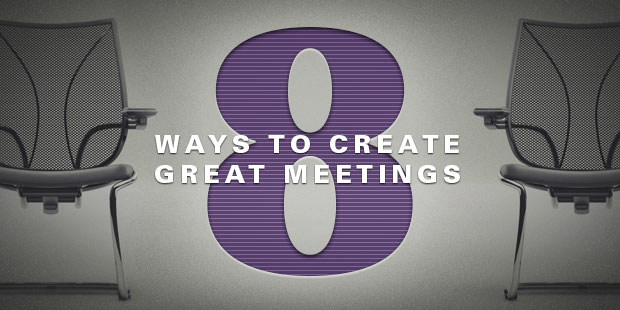
8 Ways to Create Great Meetings
Poorly run meetings start in the wrong place and end up rushed before they’re done.
Right place:
Leave inconsequential items for the end. Deal with big items at the beginning. I’m tempted to check off a few quick agenda items before digging into the meat of meetings. It’s seductive but ineffective and inefficient.
Don’t prioritize insignificant agenda items
by placing them first.
Starting with insignificant issues raises their significance. Trivial items frequently take longer than expected. Additionally, you’re wasting your best moments on least important issues.
Better to rush through less consequential items – at the end – than substantive issues.
The top item on your agenda should be:
- Biggest problem.
- Best opportunity.
- Grandest goal.
- Greatest issue.
Meetings are dangerous because talking feels like action but it isn’t. Effective meetings result in decisions and action. If actions or decisions aren’t required, send an email, make a call, or post a report on the company’s intranet.
What if:
What if biggest problems can’t be fully solved? Take the biggest step toward best available solutions. Hit it again next time.
What if best opportunities can’t be fully leveraged? Take the best available action.
What if grandest goals can’t be immediately reached? Take the grandest steps possible.
The best action at meetings is assigning actions.
8 ways to run great meetings:
- Short agendas are better than long.
- Allow ample time to discuss substantive issues.
- Rush through trivial items at the end.
- Press for decisions.
- Create immediate, short-term action items.
- Set short-term incremental deadlines. If it’s due in six months it won’t be started for five unless you set clear, impending milestones.
- Identify champions – people who own action items.
- Follow-up with participants in between meetings. Ask, “How’s your projecting coming?”
What tips or strategies create great meetings?

Tags: Dan Rockwell, Leadership Engine, Meetings











